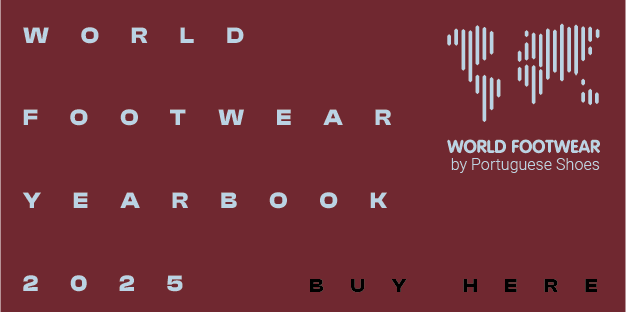Online sales will become more important than in brick and mortar shops

The words are from Cleto Sagripanti, President of the European Confederation of the Footwear Industry (CEC). An entrepreneur and a business man with extensive experience in the shoe industry
wordfootwear.com has talked to Cleto Sagripanti to hear his views on an extensive list of issues currently impacting the footwear industry. Today we bring you the second part of the interview, focusing on current and future challenges of the industry
EU companies
When questioned about the role of the European companies in setting up the worldwide fashion and design trends, Mr Sagripanti hasn’t hesitated: “The growing number of European footwear exports to non-EU countries since 2011 provides a good argument to justify the claim that European footwear is well positioned in the international arena”. Between 2009 and 2015 EU exports increased by 39% in quantity and by 83% in value. On top of that, according to the World Footwear Yearbook Europe has the highest average export price with 9 European countries among the 15 top exporters. “Our European footwear is a high added value consumer product that respects high safety, environmental and social standards; it bursts with creativity and design and is manufactured using the latest technologies and materials. It forms part of our creative industries and European culture and this is clearly thanks to the work of our designers and the history and image of our European brands”, is the strong belief of the CEC’s President.
International trade
Many discussions in favor of and against the signing of the Transatlantic Trade and Investment Partnership (TTIP) have taken place over the last year and this topic is frequently present in any conversation involving businesses from both sides of the Atlantic. The recent US elections have caused a slowdown in the negotiations added to the uncertainty of what could happen next.
The President of the European Confederation of the Footwear Industry believes that businesses of all sizes - in particular small companies - as well as workers, consumers and citizens in both the EU and the US, could benefit from the signing of this agreement and he adds: “For the European footwear industry the TTIP is of major relevance as it will facilitate access to a market of 322 million consumers. Despite high import tariffs and cumbersome administrative and customs procedures, the last two years have shown a significant increase in footwear trade between the European Union and the United States, both in exports and imports. This increase demonstrates rising consumer demand for the footwear products offered by the respective trading partners and their desire for greater variety and choice”. To sustain this, we are reminded that from 2014 to 2015, EU exports to the US rose from 27.2 million pairs to 29.8 million pairs (9%), and from 1 430.6 million euros to 1705.9 million euros (19%).
Mr Sagripanti concluded: “We trust that the new US Government will soon continue negotiations with the EU to quickly reach a satisfactory agreement that further boosts bilateral trade between the two major economic areas by lowering export tariffs, simplifying procedures and establishing regulatory harmonisation.”
Future challenges for the footwear industry
The future is uncertain. The world has been facing economic slow-down which is impacting several economies across the world and companies from almost all sectors. As a result of a globalized and fast world, political, economic and social change occurs rapidly and impacts the industries and businesses worldwide. However, some key stakeholders should actively contribute to the recovery of businesses: “It is important that banks and financial institutions have their faith restored in enterprises and entrepreneurs. Over the last 5-6 years, industries have not been funded even when projects were promising”.
That takes particularly higher importance as new challenges are imposed to companies, brands, and businesses. Mr. Sagripanti elects one particular topic which is already impacting the footwear industry, and to which extent is still to be assessed: “The digitalization of SMEs so that they can access consumers through online sales will also present a challenge. In the near future, online sales will become more important than brick-and-mortar shops. Companies will need finance and a skilled workforce to maximize this opportunity”.
EU companies
When questioned about the role of the European companies in setting up the worldwide fashion and design trends, Mr Sagripanti hasn’t hesitated: “The growing number of European footwear exports to non-EU countries since 2011 provides a good argument to justify the claim that European footwear is well positioned in the international arena”. Between 2009 and 2015 EU exports increased by 39% in quantity and by 83% in value. On top of that, according to the World Footwear Yearbook Europe has the highest average export price with 9 European countries among the 15 top exporters. “Our European footwear is a high added value consumer product that respects high safety, environmental and social standards; it bursts with creativity and design and is manufactured using the latest technologies and materials. It forms part of our creative industries and European culture and this is clearly thanks to the work of our designers and the history and image of our European brands”, is the strong belief of the CEC’s President.
International trade
Many discussions in favor of and against the signing of the Transatlantic Trade and Investment Partnership (TTIP) have taken place over the last year and this topic is frequently present in any conversation involving businesses from both sides of the Atlantic. The recent US elections have caused a slowdown in the negotiations added to the uncertainty of what could happen next.
The President of the European Confederation of the Footwear Industry believes that businesses of all sizes - in particular small companies - as well as workers, consumers and citizens in both the EU and the US, could benefit from the signing of this agreement and he adds: “For the European footwear industry the TTIP is of major relevance as it will facilitate access to a market of 322 million consumers. Despite high import tariffs and cumbersome administrative and customs procedures, the last two years have shown a significant increase in footwear trade between the European Union and the United States, both in exports and imports. This increase demonstrates rising consumer demand for the footwear products offered by the respective trading partners and their desire for greater variety and choice”. To sustain this, we are reminded that from 2014 to 2015, EU exports to the US rose from 27.2 million pairs to 29.8 million pairs (9%), and from 1 430.6 million euros to 1705.9 million euros (19%).
Mr Sagripanti concluded: “We trust that the new US Government will soon continue negotiations with the EU to quickly reach a satisfactory agreement that further boosts bilateral trade between the two major economic areas by lowering export tariffs, simplifying procedures and establishing regulatory harmonisation.”
Future challenges for the footwear industry
The future is uncertain. The world has been facing economic slow-down which is impacting several economies across the world and companies from almost all sectors. As a result of a globalized and fast world, political, economic and social change occurs rapidly and impacts the industries and businesses worldwide. However, some key stakeholders should actively contribute to the recovery of businesses: “It is important that banks and financial institutions have their faith restored in enterprises and entrepreneurs. Over the last 5-6 years, industries have not been funded even when projects were promising”.
That takes particularly higher importance as new challenges are imposed to companies, brands, and businesses. Mr. Sagripanti elects one particular topic which is already impacting the footwear industry, and to which extent is still to be assessed: “The digitalization of SMEs so that they can access consumers through online sales will also present a challenge. In the near future, online sales will become more important than brick-and-mortar shops. Companies will need finance and a skilled workforce to maximize this opportunity”.












